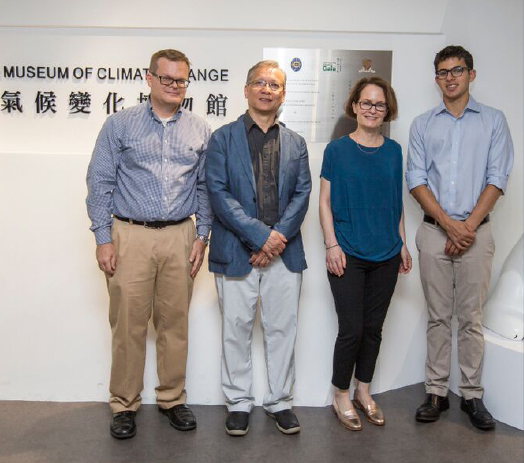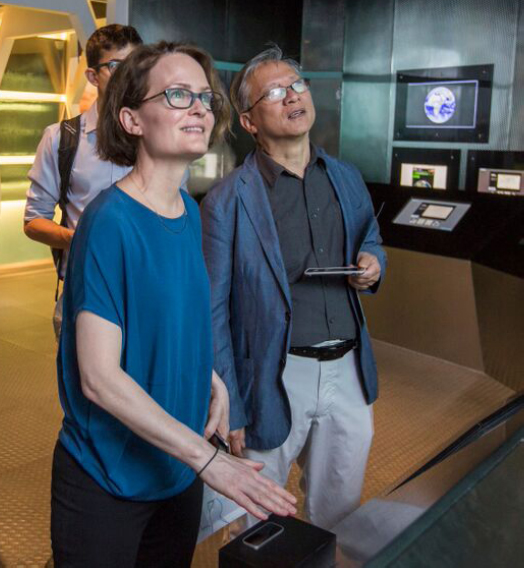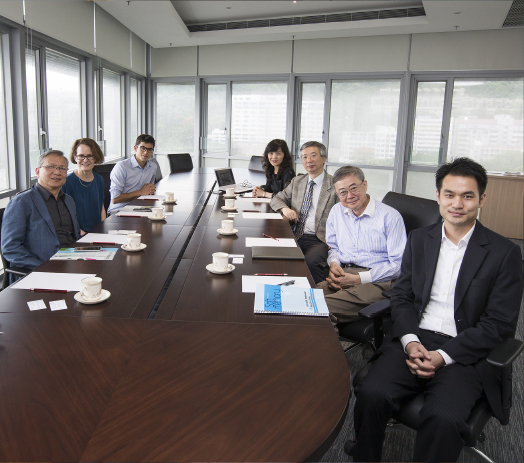If They Can Make It There, They’ll Make It Anywhere
Manhattan came to Hong Kong on May 19 when the team looking to found the ambitious Climate Museum in New York City visited the Jockey Club Museum of Climate Change. The Americans credit their Asian counterpart as the first museum of its type on the planet. They want to draw on ideas as to how to launch a similar but much larger version in the United States.

Miranda Massie, the founder and executive director of the Climate Museum project, led the U.S. contingent. They seek to construct their institution – dubbed the “museum of unnatural history” – from scratch, complete with a star-architect structure that will be a lesson in sustainability itself. The aim is to draw 1 million visitors per year. At an estimated 120,000 square feet, it will no doubt be a “must-see” landmark if it opens in around five years as planned.
A former civil-rights lawyer, Massie changed tack after Hurricane Sandy wreaked havoc in the Big Apple in 2012. That, to her, rammed home that rising sea levels and changing weather patterns are a very real and present threat, not some far-off possibility.
The hurricane swung surprisingly far north – most American storms hit the Caribbean and Southern U.S. states if they make landfall, and caused US$67 billion worth of damage. It is the second-costliest disaster in American history, ranking behind only the US$151 billion wrought by Hurricane Katrina in 2005.
Manhattan was inundated by at least 14 feet of water, turning swathes of the city to swamp. Massie got to replicate the event on her visit to Hong Kong, manipulating the virtual-reality simulation of the addition of metres of floodwater to NYC.
That is the sort of interplay the New York team would like to see occur in their own institution. They praised the way that the Hong Kong museum personalizes each visit through interactive displays, something they felt made the impact more profound.
Massie was joined in her visit by Climate Museum advisory-board member Eric Chan, founder of the design consultancy ECCO Design, and New York Times reporter Michael Forsythe, who covered the event.

“There’s research currently that shows the more people learn about climate, the more they tend to emotionally shut down and disengage,” Massie told Forsythe. “Not everybody, but most people. Because it’s distressing and because it’s very clear that just changing the light bulbs in your own home doesn’t matter.”
After Hurricane Sandy, Massie immediately started researching climate-change museums. She was startled to find that the Jockey Club Museum of Climate Change was the world’s sole example.
“It’s the preeminent science, development, tech, health, finance and social question for our species,” she told Carolyn Kormann of The New Yorker during another museum tour in New York. Her own work protecting people’s rights wouldn’t matter much if they are living in a dying society, she felt.
The launch project team have been planning their new institution since 2014. They say the Climate Museum will take a page from the book of its Hong Kong counterpart by focusing on how people can change their behaviour to reduce carbon emissions and mitigate climate change. It is a “solutions-focused” approach, rather than a desire to paint an apocalyptic vision of the Earth’s doomed future.
The curators of both museums see plenty of room for cooperation between New York and Hong Kong. With their mutual focus, the two institutions can exchange the latest research and data on climate change, as well as sharing exhibits and expertise.

There’s plenty of work for the U.S. team now they have taken back their lessons from the Fragrant Harbour. Given its global scope, the Climate Museum will require hundreds of millions of dollars to fund. The New Yorkers asked for help from Hong Kong – they offered the Jockey Club Museum of Climate Change the opportunity to appoint a representative to the new museum’s board.
The cross-pollination makes perfect sense since both museums seek to expand the scientific knowledge base on the topic of climate change. The two institutions are kindred spirits that seek to take an in-depth examination of the topic and translate it effectively by communicating its importance and relevance to the general public. Only through combined planet-wide efforts are any solutions to the vast array of climate-driven challenges going to be found.
by Alex Frew McMillan






